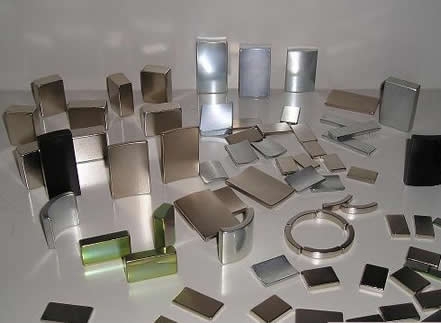products
Your current location:Home> product

Sintered NdFeB Magnet
-
Current Price:
MOQ:
Total supply:
Ship Date:
Overview:
In 1983, M. Sagawa of Sumitomo Metal firstly developed sintered NdFeB permanent material by powder metallurgy method,almost at the same time JJ Croat in quenched magnet department of General Motors also made out bonded NdFeB by Rapid quenching method. Both of them have applied for patents respectively. So now there are two major NdFeB magnets which are sintered NdFeB by powder metallurgy and Bonded NdFeB by rapid quenching method. In addition,there are some other methods with relatively small yields, such us reduction diffusion method, HDDR method and casting method. Our sintered NdFeB products are produced by the advanced powder metallurgy. Sintered NdFeB permanent magnetic material is the alloy magnet consists of metal neodymium, iron, boron and other trace elements (Dy, Al, Nb, Mo, Co, etc.), its density is 7.5g/cm3.The production process is to make the alloy ingot which have been melted into powder by the powder metallurgy, and make the powder be molded and oriented in a magnetic field. The blank molded in an inert gas or in vacuum is sintered into densification. So Sintered NdFeB has high energy product&coercivity, cost-effective, and good mechanical properties,it is called “the Contemporary Magnet King”.
Compared with other permanent magnet materials:
Advantages: the most prominent features of sintered NdFeB are high remanence Br,high coercivity Hcb and Hcj,and high energy product (BH) m. Therefore, from its advent, it has been widely used.
Disadvantages: NdFeB also has some disadvantages, such as, fragile, low work temperature (less than 220 ℃), low temperature coefficient, poor corrosion resistance.
Coating: as poor corrosion resistance of sintered NdFeB itself, so under normal circumstance,the products produced must have protective coatings,according to the corrosion resistance requirements of the products in the application environment. Currently the most widely used are the following coating: zinc, nickel, epoxy, plating, gold, silver, aluminum, chrome and a small amount of Parylene coating.



